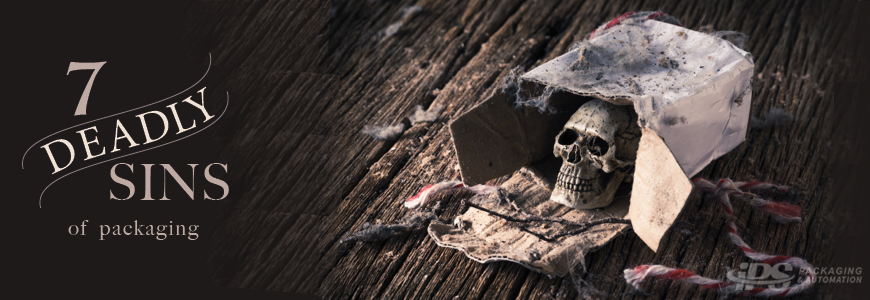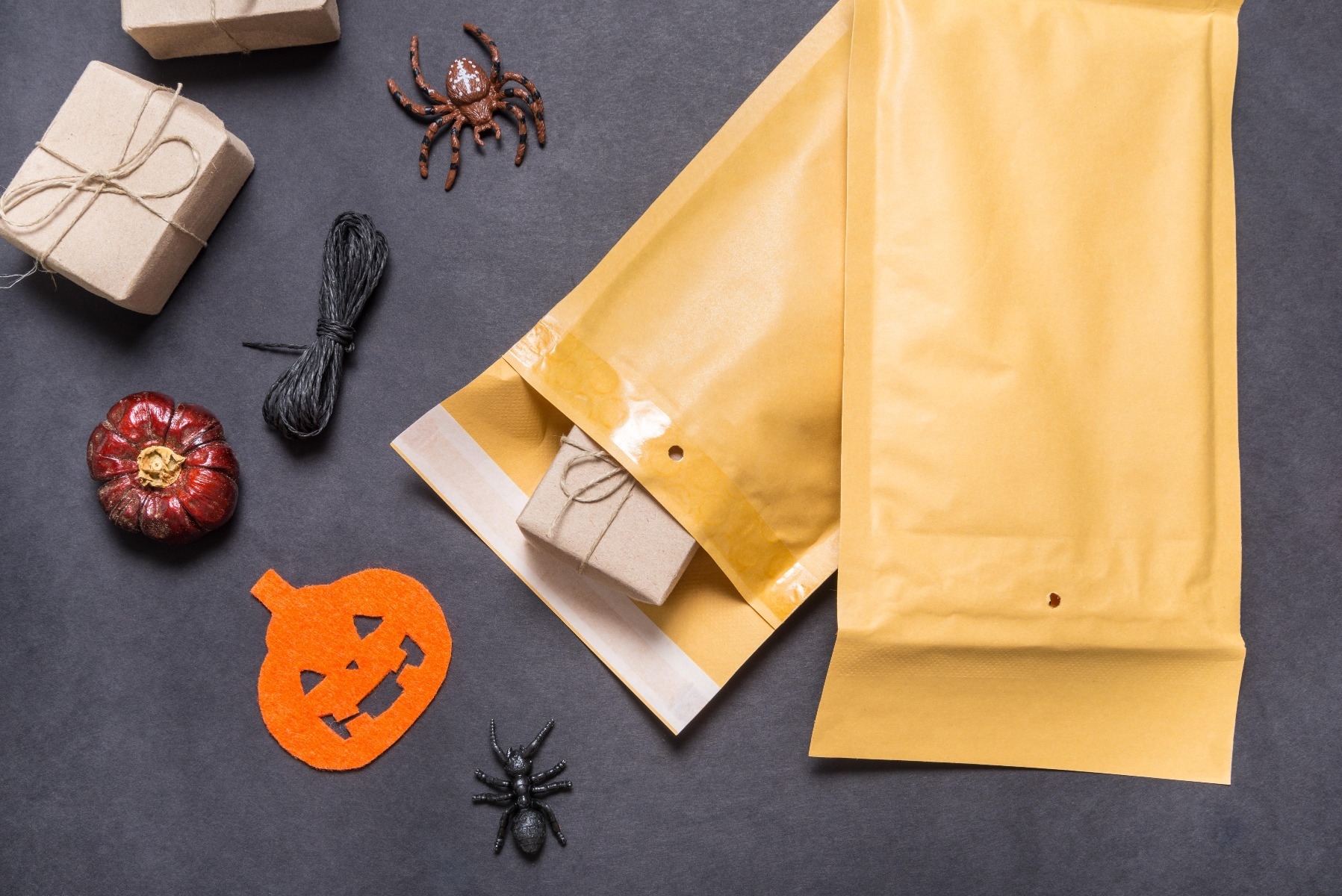
The Seven Deadly Sins of Packaging
They’re creepy and they’re kooky, mysterious and spooky, they’re altogether ooky — they’re packaging mistakes. You heard us correctly. Packaging mistakes might not seem like the scariest thing on your block this Halloween, but they can bring some major frights that you’ll never see coming. To honor the spookiest season of all, we’re covering the seven deadly sins of packaging you should be certain to avoid. Make sure you understand each of these so that you can avoid spine-chilling scares this year!
Sin #1: Ignoring the Right Size
The word “rightsizing” gets thrown around a lot in the packaging world, but many organizations and individuals often fail to really explain it. Simply enough, rightsizing is the practice of selecting or creating a package or container that is precisely the right size for the item it carries or protects, rather than being too small or too large. Rightsizing your materials, such as corrugated boxes or poly mailers, keeps your products safer by eliminating room to slide around within an oversized container or burst out of the seams of a too-small option.

Sin #2: Avoiding Sustainability
We get it. Making the move to sustainable packaging solutions seems haunting. With so many options to choose from, it can be easy to get overwhelmed with choices in order to determine what works best for your products and budget. Don’t make the mistake of just ignoring sustainable packaging though — consumers demand it more and more every day and expect you to present something that is recyclable, reusable, compostable, or eco-friendly in some other way.
Sin #3: Skipping Packaging Automation
It’s a chilling feeling when your business can’t keep up with production demands. No matter how hard your team works, you just can’t send every pallet or box out the door and end up delivering to customers later than promised. Packaging automation can solve this problem. With the assistance of packaging equipment and automated packaging lines, you’ll quickly see an increase in throughput, a reduction in material waste, cost savings, and an impressive ROI within an average of 8-12 months.
Sin #4: Using the Wrong Materials
To an inexperienced packager, all case-sealing tape probably looks about the same. And all stretch film seems to do the exact job of the next roll after it. However, this is one of the biggest sins you can commit in the world of packaging. Keep in mind that some materials don’t behave alike, even if they look similar. For example, some box tapes perform better on recycled cartons while others won’t hold together anything but virgin fibers.

Sin #5: Over or Under Packing
We all know someone (or maybe we are that someone) who packs a month’s worth of clothes for a three-day trip or only throws in two t-shirts and forgets to bring floss on a week-long vacation. Turns out, these kinds of people have the same tendencies when packing items for shipment. Overpacking often results in wasted materials and overspending, while under packing leads to damaged products that go unprotected throughout the entire supply chain. Instead, be sure you commit to the amount of packaging that’s just right for your goods.
Sin #6: Relying on the Same Old Materials
It can be easy to find one packaging supply that works and then stick with it forever, but oftentimes that will come back to haunt you. This trap catches many people who may not want to change something that works. The problem arises when you continue to use the same materials for new products or applications. A kraft paper void fill may work beautifully for one product, whereas plastic air pillows might be the best choice for your latest offering. Staying aware of new packaging materials and what’s available to you is the simplest way to avoid committing this particular packaging sin.
Sin #7: Failing to Test
A failure to plan is planning to fail. Many commit the ghoulish mistake of just assuming whatever packaging they choose will work and get their products safely to the end user. This is often far from the truth, however – especially in situations with custom packaging. Before sending new packages to consumers, take the time to test the materials. Do they pass drop tests? Can they hold up to vibrations like those that happen in the back of a shipping container? Save yourself money, time, and headaches in the long term by testing early.
Don’t Get Spooked by the Sins of Packaging
So put a witch’s shawl on, a broomstick you can crawl on, we’re going to pay a call on — avoiding packaging mistakes. The good news is that the seven deadly sins of packaging can be evaded with a little advance planning. Better yet, our team of expert packaging specialists is standing by to assist in making sure you don’t fall into those spooky traps. Contact us or give us a call today at (800) 277-7007 for all the details you need!


